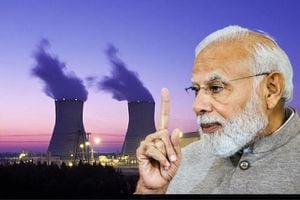As the end of 2025 approaches, the United States Federal Reserve finds itself at a crossroads, with the future of its leadership and the direction of its monetary policy hanging in the balance. The debate over interest rates, the evolving state of the U.S. economy, and the potential appointment of a controversial new Fed Chair have all converged to create a moment of high stakes and uncertainty for the world’s largest central bank.
On November 27, 2025, Kevin Hassett emerged as the strongest candidate to become the next Chairman of the Federal Reserve under President Donald Trump’s administration, according to Bloomberg. Hassett, a former director of the National Economic Council, is widely known for his advocacy of aggressive interest rate cuts and his involvement in the world of digital assets. In a political climate already charged with debate over the Fed’s independence, his candidacy is drawing both anticipation and concern from policymakers, investors, and the broader public.
The selection process, overseen by Treasury Secretary Scott Bessent, has reportedly reached its final stage, with Hassett and several other candidates having completed second interviews. An official announcement is expected before Christmas, but as with so much in Washington, the final decision rests with President Trump. Hassett has made it clear that he is willing to take on the role, and his close relationship with the president—alongside their shared views on monetary policy—makes his selection increasingly likely.
Hassett’s reputation as a proponent of lower interest rates aligns closely with Trump’s long-standing criticism of current Fed Chair Jerome Powell. Trump has repeatedly voiced frustration with what he sees as Powell’s slow pace in cutting rates, arguing that a more aggressive approach is needed to spur economic and market growth. If Hassett is appointed, many expect a significant shift in the Fed’s approach, with policies designed to be more supportive of growth and potentially more accommodating to risk-taking in financial markets.
Yet Hassett’s candidacy comes with its own set of complications. As reported by Bloomberg, he disclosed earlier this year that he holds more than $1 million in Coinbase stock, a detail that has sparked concern in Washington about a possible conflict of interest. The Federal Reserve plays a key role in regulating stablecoins and overseeing the banking sector’s exposure to digital assets—areas directly connected to companies like Coinbase. Hassett’s involvement with Coinbase’s Academic and Regulatory Advisory Board, which also includes figures with Trump administration ties such as former SEC chairman Jay Clayton and former CIA general counsel Courtney Elwood, adds another layer of complexity. Critics worry that his financial interests and industry connections could cloud his judgment when it comes to regulating the fast-evolving digital asset landscape.
According to Pintu News, "Kevin Hassett’s candidacy as Chairman of the Federal Reserve marks an important period in US monetary policy. With a controversial background and views, his selection could bring about major changes in the way the central bank addresses future economic and financial regulatory challenges." The fact that the administration is so closely involved in the Fed Chair selection—and has made efforts to replace other Fed members—has reignited a longstanding debate about the central bank’s independence. For many, the prospect of a Fed led by a close Trump ally raises the specter of political interference at a time when the institution’s credibility is crucial.
Meanwhile, the Federal Reserve itself is grappling with a divided policy outlook. As of November 25, 2025, reports from The Wall Street Journal and other outlets noted that Fed officials remained split on whether to cut interest rates at their upcoming December policy meeting. The latest economic data, while closely watched, was not expected to sway opinions decisively. According to BlockBeats News, the Fed’s Beige Book survey released on November 27 indicated that “U.S. economic activity has shown little change in recent weeks, but overall consumer spending has further declined except among high-end consumers.” Employment levels have ticked down slightly, and prices have continued to rise at a moderate pace.
The Beige Book, an anecdotal report compiled from surveys and interviews across the Fed’s 12 regional districts, painted a picture of a job market that continues to sputter. As reported by Dow Jones & Company, hiring has declined in half of the districts, and both the recently ended government shutdown and rapid advances in artificial intelligence have weighed on job seekers’ prospects. Cost and price pressures remain persistent, setting up a challenging balancing act for policymakers as they head into the December meeting.
“Employers showed little appetite for hiring, which fell in half of the Fed’s 12 regional districts, while the recently ended federal government shutdown and artificial intelligence also weighed on job seekers’ prospects,” the Beige Book noted. These findings underscore the competing risks the Fed must weigh: on one side, the need to support a slowing labor market; on the other, the imperative to keep inflation in check.
Market participants are watching the Fed’s next moves with keen interest. On November 25, gold prices rose to $4,081.52 per ounce, buoyed by growing expectations of a rate cut in December and a weaker U.S. dollar, as reported by Reuters. “The market is increasingly getting convinced that the U.S. Federal Reserve is on track to cut interest rates in December,” said Bart Melek, head of commodity strategies at TD Securities. The CME FedWatch tool showed a 76% probability of a rate cut next month. New York Fed President John Williams added to the speculation, stating on November 22 that U.S. interest rates could fall “in the near term” without jeopardizing the Fed’s inflation goal, while also helping to guard against a further slide in the job market.
Investors are also awaiting key pieces of economic data, such as retail sales, jobless claims, and producer price figures, which have been delayed due to the recent government shutdown. These figures could provide additional insight into the health of the economy and influence the Fed’s final decision in December.
If Kevin Hassett is ultimately appointed as Fed Chair, his tenure is likely to be closely scrutinized. Supporters argue that his willingness to cut rates aggressively and embrace innovation in digital assets could give the economy a needed boost. Detractors, however, warn that his financial ties and political closeness to Trump could undermine the Fed’s independence and credibility at a critical juncture. Both sides agree that the outcome of the current selection process—and the policy choices made in the coming months—will have far-reaching consequences for the U.S. economy and global financial markets.
The coming weeks promise to be pivotal for the Federal Reserve. With the fate of its leadership and the future of its monetary policy in question, all eyes are now on Washington as the clock ticks down to a decision that could reshape the economic landscape for years to come.






